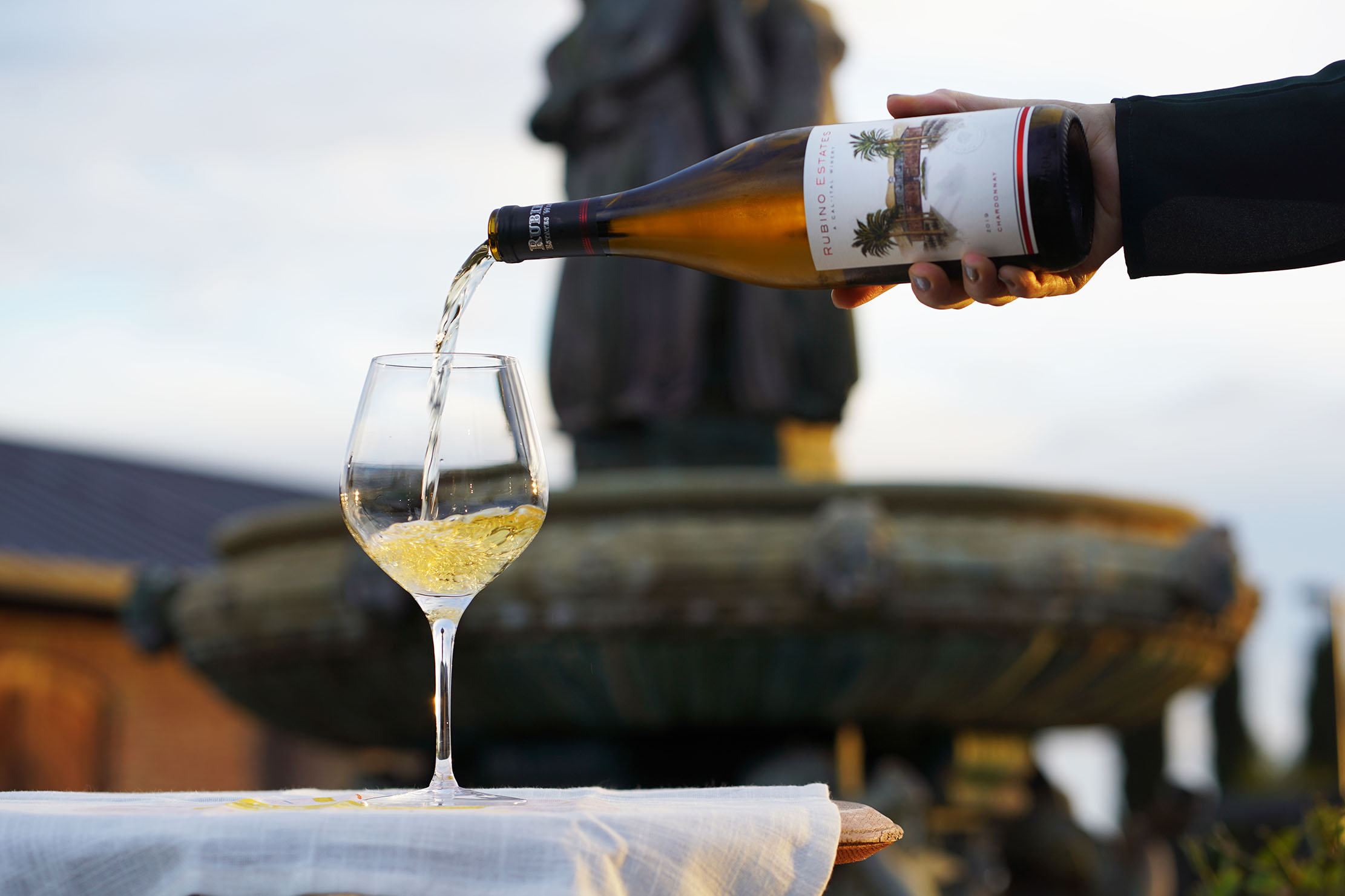A Quick Guide to Chardonnay

As one of the most widely known and recognized white wine varietals, Chardonnay has earned its fame from its approachability and golden splendor. Some sommeliers consider the quality of an establishment’s Chardonnay to be a metric for guessing the quality of the winery as a whole. This week, we’re dwelling on the history of this ubiquitous grape!
Old World Beginnings
The illustrious history of Chardonnay dates back at least as far as the Roman empire, when vines of a varietal called Gouais Blanc were brought from Croatia to mainland Europe. Gouais Blanc would eventually cross-pollinate with the French aristocracy’s Pinot Noir, from which the gorgeous golden-green of Chardonnay grapes was born. For many years, Chardonnay was grown alongside, blended with, and mistaken for Pinot Blanc. Chardonnay would not gain its own fame as a varietal until later, partially aided by the use of Chardonnay in Champagne.
New World Flair
“New World” Chardonnay has a life of its own. Some of the best Chardonnay in the world grows right here in California. In fact, the first successful planting of Chardonnay grapes in California was in the Livermore Valley, and we’re proud to continue that legacy. Chardonnay thrives in California’s valleys, where blankets of coastal fog slow the ripening of the grapes and encourage flavorful, robust fruit. Californian Chardonnay exploded in popularity after the “Judgement of Paris” in 1976, where multiple Californian wines, including a Chardonnay, beat French wines in a blind tasting. This turned the wine world upside down and brought the New World wines into an era of prestige.
Delicious Variation
Virtually anywhere wine is grown, there is Chardonnay. This widespread cultivation makes for huge variety in what the wines can offer. It is referred to as “malleable,” meaning that the taste of the wine is highly dependent on the style and work of the Winemaker, as well as terroir—the unique conditions of the place in which it was grown. When you sip a Chardonnay, some say you “taste the place.” The Winemaking process lends significant flair as well. A natural process called “malolactic fermentation” is used on some Chardonnay to create a smooth, buttery, and less acidic wine. There's a Chardonnay for everyone!
Flavor Like No Other
The use of oak barrels is the source of most of the Winemaker’s influence when crafting a Chardonnay. Some Chardonnays are fermented and aged in stainless steel, though oak lends iconic flavor and complexity. Sometimes referred to as the Winemaker’s spice rack, oak barrels, when used either for aging or for both fermentation and aging, can impart toasty flavors of vanilla, caramel, spice, cream, coconut, cinnamon, cloves, and more. After bottling, Chardonnay is delicious when young while still holding up well if aged.
